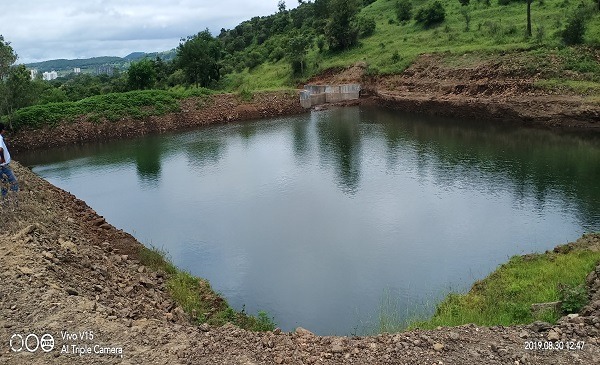COURTESY : Gef
Energy efficiency
Consumption of fossil fuels for power, heating, and transport has contributed 80% of increased greenhouse gas emissions since 1970. Moreover, between now and 2040, global energy demand is projected to grow by 30%, and even faster in developing countries. Meanwhile, almost one billion people globally still lack adequate energy services and rely on traditional biomass to meet their basic energy needs, leading to environmental degradation and premature deaths for millions of people, especially women and children.
Decarbonization of the global energy system is critically important for a future global temperature increase that is in line with the ambition built within the Paris Agreement.
Energy efficiency benefits a wide range of sectors:
- Residential: A one-time investment in energy efficiency pays itself back quickly in lower bills for heating, air conditioning, hot water and lighting.
- Buildings: Buildings alone account for approximately 32 percent of global energy use, and for nearly 30 percent of total GHG emissions, including energy end-use emissions, electricity generation emissions and district heat. Retrofitted buildings can reduce heating and cooling energy requirements by 50-90 percent. New, energy-efficient buildings often use close to zero energy for heating and cooling
- Transport: Electrically-powered transport reduces final energy use by more than a factor of three, as compared to gasoline powered vehicles.
- Industry: Manufacturing and industry, both large and small, accounts for a large portion of GHG emissions. Improving efficiency through better practices, better technology and new materials, helps lower emissions, save energy, reduce waste and save money. Many developing countries are counting on the SME sector for the majority of job growth. With greater efficiency, we can help that sector grow sustainably.
To make these kinds of changes, countries need the right policies and regulations in place. These will target overall energy policy; demand-side and supply-side measures; energy tariff regulations; power sector reform; energy efficiency policies, laws, targets and plans; establishment of energy efficiency agencies; and promotion of energy efficiency audits. What We Do
The GEF has long recognized the importance of energy for economic development, as well as the negative effects of inefficient energy use. For that reason, we support the transfer of energy-efficient technologies, but also help reform policies and regulations to foster energy efficiency.
As an operating entity of the financial mechanism for the United Nations Convention on Climate Change (UNFCCC), the GEF has supported climate change mitigation in developing countries since its inception. We maintain a strong focus on transferring environmentally sound technologies in keeping with UNFCCC’s technology transfer framework.
In its early days, the GEF focused on removing barriers to energy conservation and energy efficiency. To that end, our projects helped clear a path for stronger building codes, efficient lighting, energy labels for appliances, the creation of energy service companies, revolving funds for investment and the transfer of technology.
GEF support has included global energy efficiency certification and standards programs for leapfrogging markets to the next generation of energy efficient appliances, including lighting, refrigerators, air conditioners, motors and distribution transformers. We are supporting innovative financial mechanisms to help local banks provide more financing for energy efficiency projects. We are also accelerating investments in building energy efficiency and district energy with a focus on cities.Results
The GEF has provided $2.5 billion and leveraged $25 billion from other financing sources in support of expansion of renewable energy supply and improvements in energy efficiency. The GEF’s new investments will help shift countries towards a low-carbon future.
In renewable energy, the GEF supported the demonstration of pre-commercial technologies, such as concentrating solar power and geothermal energy, as well as increased energy access through decentralized renewable energy systems. In terms of enhancing policies and the enabling environment for renewable energy development, the GEF has helped introduce feed-in tariffs, reverse auctions, and other innovative market-based mechanisms and financial instruments to accelerate renewable energy investments.
In energy efficiency, the GEF has helped introduce standards for consumer appliances and equipment, such as lighting, air conditioners and motors, and energy-efficient buildings. The GEF has also helped transform national energy systems through the introduction of energy service companies and has enhanced the capacity of thousands of small- and medium-sized enterprises to adopt energy efficient practices. In the transport sector, the GEF’s catalytic investments in low carbon transport and urban systems has helped increase overall energy efficiency.Looking Ahead
The adoption and uptake of energy efficiency policies, measures, and technologies has not reached its full potential. Building on a successful GEF-6 partnership with Sustainable Energy for All, in GEF-7 the GEF will support additional countries through the energy efficiency accelerators. The accelerators share common approaches across diverse sub-sectors, including Buildings, District Heating and Cooling, Energy Management for Industry, Equipment and Appliances. The accelerators promote global best practices, foster harmonization of testing and performance standards, and provide technical assistance to countries needing targeted engagement. These accelerators identify critical barriers to adoption of energy efficiency and pilot approaches that can be further scaled by other institutions, including the private sector. A new accelerator for addressing the need of energy efficiency retrofits in multi-family dwellings will be considered. Accelerator models based on the Finance and Technology Transfer Centre for Climate Change may be considered.
The Sustainable Cities Impact Program will be critical to address both short-term and long-term climate change challenges in the rapidly growing urban sector. The Sustainable Cities Impact Program targets urban interventions with significant climate change mitigation potential to help cities shift towards low-emission and resilient urban development in an integrated manner. Cities must be empowered to effectively support the implementation of NDCs and low-carbon development pathways. Examples of low-carbon technologies and practices needed in the urban sector include energy efficiency (buildings, lighting, air conditioning, transport, district heating systems), renewable energy development (solar, wind, co-generation, waste-to-energy), and solid waste and wastewater management. Stronger land use and transport planning will lead to long-term emissions reduction in the urban sector and support resilient development.



